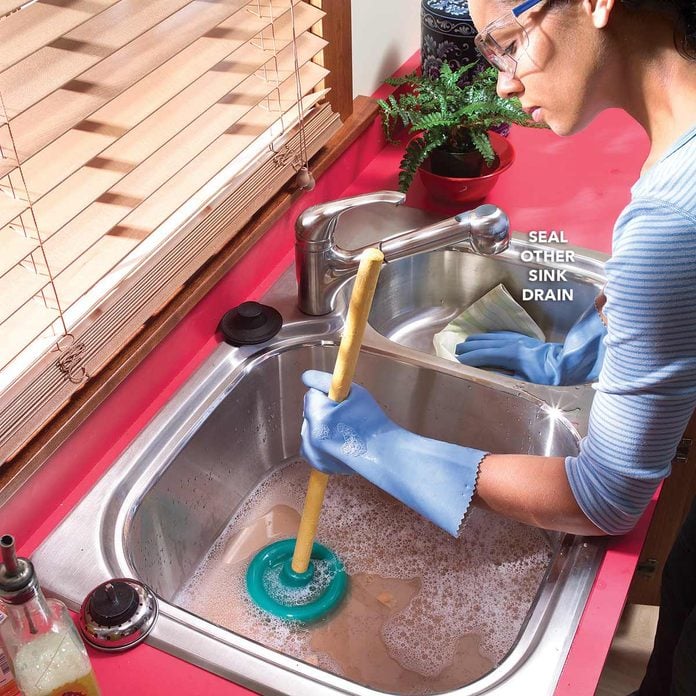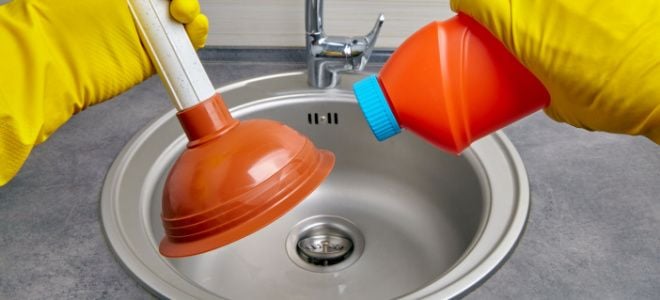Ways to Learn Plungers and Drain Cleaner: Specialist Tips
Ways to Learn Plungers and Drain Cleaner: Specialist Tips
Blog Article
They are making several good points on How to Use a Plunger to Unclog a Toilet or Drain overall in this article followed below.

Intro
Proper upkeep of house drains pipes is important for protecting against obstructions and ensuring smooth water circulation. Among the trick devices in every home owner's toolkit is the bettor, along with numerous drain cleaners designed to take on persistent clogs efficiently. This write-up explores how to make use of plungers and drain cleaners effectively to maintain your drains pipes moving easily.
Section 1: Understanding Bettors
Kinds of Plungers
There are several types of bettors readily available, each developed for various kinds of drains pipes and obstructs. One of the most typical kinds consist of cup plungers, flange bettors, and accordion bettors.
Exactly How Plungers Job
Plungers deal with the concept of producing stress and suction to dislodge blockages. When effectively applied over a drainpipe, they create a vacuum that can take out debris or break up blockages.
Choosing the Right Plunger
Picking the appropriate bettor depends on the kind of drainpipe and the nature of the obstruction. Mug bettors are perfect for sinks and tubs, while flange plungers are better fit for bathrooms due to their layout.
Typical Mistakes with Bettors
Preventing these blunders makes sure efficient plunging: inappropriate seal around the drain, not enough force, and unclear surrounding particles.
Area 2: Utilizing Plungers Effectively
Preparation
Prior to diving, guarantee the bettor covers the drainpipe completely and develops a limited seal. Clear any visible particles around the drainpipe opening.
Technique
Start with gentle plunging movements to develop suction. Boost stress progressively, using a stable rhythm. Repeat as essential until the drainpipe removes.
Troubleshooting Tips
If plunging doesn't function, attempt adjusting the seal, applying oil jelly for a better seal, or making use of a different sort of plunger.
Area 3: Understanding Drain Cleansers
Types of Drain Cleaners
Drain pipes cleaners can be chemical or enzymatic. Chemical cleansers utilize strong chemicals to liquify blockages, while chemical cleansers use all-natural enzymes to break down organic matter.
Just How Drain Cleaning Company Work
Chemical cleansers respond with obstructions to dissolve them, while chemical cleaners break down natural products like hair and grease without damaging pipes.
Security Considerations
Always use handwear covers and eye security when using chemical drain cleansers. Ensure sufficient air flow and adhere to manufacturer directions meticulously.
Eco-Friendly Alternatives
Take into consideration utilizing vinegar and cooking soda or enzyme-based cleaners for environmentally friendly alternatives that are safer for pipes and the atmosphere.
Section 4: Using Drainpipe Cleansers Efficiently
Application Strategies
Pour chemical cleansers straight right into the drain opening. Allow them to benefit the advised time before purging with warm water. Chemical cleansers should sit overnight.
Preventative measures
Stay clear of blending various sorts of cleansers, as this can generate toxic fumes. Never make use of chemical cleansers combined with a bettor, as spilling can happen.
Managing Stubborn Clogs
For persistent obstructions, think about using a pipes snake or calling a specialist plumbing to stop damages to pipes.
Final thought
In conclusion, recognizing how to make use of plungers and drain cleansers efficiently is crucial for preserving healthy plumbing systems. By selecting the right devices and techniques, home owners can deal with small obstructions and prevent major plumbing problems down the line.
How To Properly Use A Plumbing Snake To Clear Drains
When any drain clogs in our home arise, we tend to gravitate toward the plunger and little else. In cases where the plunger and its vacuum-created pressure are not able to clear clogs, many immediately move to harmful chemicals or simply call their plumber to fix the issue.
we’re happy to help with all drain cleaning needs and concerns. This includes informing you on a few other home remedies you may have at your disposal for minor to moderate clogs, one of which is the use of a plumbing snake. Many people have never used one of these before – let’s go over the steps to take when your drain clogs and you have a plumbing snake available.
Attempt Plunger Use
The first step here, as we noted above, should indeed be to grab your plunger when you notice a drain clog and attempt to resolve it this way. If you’re unsure how to use a particular type of plunger, our plumbers can answer any questions you have. If this doesn’t do the trick, however, you move on to the snake.
Locate And Prepare Snake
A plumbing snake is a metal or plastic device that’s generally about a quarter of an inch thick. It’s design with significant extensions, meant to reach down into your clogged drain and push the clog out. Snakes also contain drain augers that will latch onto and push stubborn blockages.
If your plunger doesn’t clear a clog, locate your snake and bring it to the drain in question. We also recommend keeping a bucket nearby to collect the clog once you pull it out, plus we’d advise wearing goggles and possibly protective gloves.
Feed Snake
Once you’re ready to go, feed the snake slowly down the drain, using the crank device it comes with to keep it moving until it finds the clog. Once this happens, much of the clog will be latched onto the coil so you can pull it out, while the rest will simply break up and flow downward.
Detach Debris
Remove the snake slowly from the drain, and once you’ve done so, pick off any debris that’s stuck to the coil. This is another area where wearing gloves is a must.
Flush Drain
Finally, take a few minutes to ensure the snake has done its job correctly. If you’ve been using it on a toilet, flush the toilet a couple times and make sure everything flows well. If you’ve used it on a different drain, flush it with some room temperature water.
https://www.mybuddytheplumber.com/blog/how-to-properly-use-a-plumbing-snake-to-clear-drains/

Application Strategies
Pour chemical cleansers straight right into the drain opening. Allow them to benefit the advised time before purging with warm water. Chemical cleansers should sit overnight.
Preventative measures
Stay clear of blending various sorts of cleansers, as this can generate toxic fumes. Never make use of chemical cleansers combined with a bettor, as spilling can happen.
Managing Stubborn Clogs
For persistent obstructions, think about using a pipes snake or calling a specialist plumbing to stop damages to pipes.
Final thought
In conclusion, recognizing how to make use of plungers and drain cleansers efficiently is crucial for preserving healthy plumbing systems. By selecting the right devices and techniques, home owners can deal with small obstructions and prevent major plumbing problems down the line.
How To Properly Use A Plumbing Snake To Clear Drains
When any drain clogs in our home arise, we tend to gravitate toward the plunger and little else. In cases where the plunger and its vacuum-created pressure are not able to clear clogs, many immediately move to harmful chemicals or simply call their plumber to fix the issue.
we’re happy to help with all drain cleaning needs and concerns. This includes informing you on a few other home remedies you may have at your disposal for minor to moderate clogs, one of which is the use of a plumbing snake. Many people have never used one of these before – let’s go over the steps to take when your drain clogs and you have a plumbing snake available.
Attempt Plunger Use
The first step here, as we noted above, should indeed be to grab your plunger when you notice a drain clog and attempt to resolve it this way. If you’re unsure how to use a particular type of plunger, our plumbers can answer any questions you have. If this doesn’t do the trick, however, you move on to the snake.
Locate And Prepare Snake
A plumbing snake is a metal or plastic device that’s generally about a quarter of an inch thick. It’s design with significant extensions, meant to reach down into your clogged drain and push the clog out. Snakes also contain drain augers that will latch onto and push stubborn blockages.
If your plunger doesn’t clear a clog, locate your snake and bring it to the drain in question. We also recommend keeping a bucket nearby to collect the clog once you pull it out, plus we’d advise wearing goggles and possibly protective gloves.
Feed Snake
Once you’re ready to go, feed the snake slowly down the drain, using the crank device it comes with to keep it moving until it finds the clog. Once this happens, much of the clog will be latched onto the coil so you can pull it out, while the rest will simply break up and flow downward.
Detach Debris
Remove the snake slowly from the drain, and once you’ve done so, pick off any debris that’s stuck to the coil. This is another area where wearing gloves is a must.
Flush Drain
Finally, take a few minutes to ensure the snake has done its job correctly. If you’ve been using it on a toilet, flush the toilet a couple times and make sure everything flows well. If you’ve used it on a different drain, flush it with some room temperature water.
https://www.mybuddytheplumber.com/blog/how-to-properly-use-a-plumbing-snake-to-clear-drains/

I was brought to that report about Tips on How to Effectively Use a Plunger through someone on another web page. Remember to set aside a second to share this blog posting if you appreciated it. I enjoy reading our article about How to Unclog Your Sink with a Plunger.
Call Today Report this page